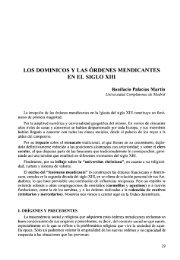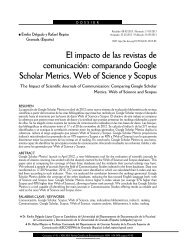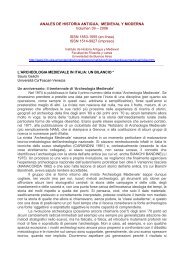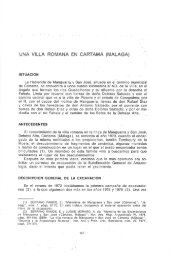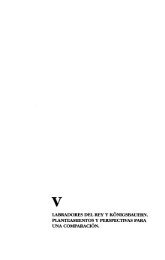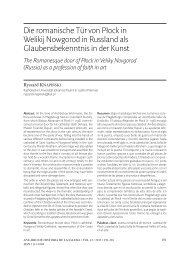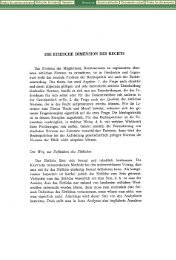Create successful ePaper yourself
Turn your PDF publications into a flip-book with our unique Google optimized e-Paper software.
ESTUDIOS VASCOS<br />
el que fuese considerada “different from the rest of Spain, and say by<br />
some to have continued in this Country ever since the Confusion at<br />
Babel”; o el que fuera “the ancient language of Spain [...] because this<br />
people have ever continued without any mixture of forrein Nations”.<br />
Centrándonos ya en la cuestión que realmente nos ocupa, la de la presencia<br />
del euskara en Las Batuecas, es muy posible que fuese Heylyn<br />
(1652: I, 234-235) el primero en reproducir la noticia de Howell. De<br />
hecho, su versión de la leyenda coincide en todo con la del autor galés,<br />
confesando incluso su fuente: “the truth hereof, besides the Credit of<br />
James Howell, in his Instructions for Forrein Travell”. Lo sorprendente<br />
es que dijera que, además, había confrontado esta revelación con “men<br />
of gravity and great place in this Realm of England; employed there [in<br />
Spain] in affairs of publick interest”. Heylyn utiliza el término “Patoecos”<br />
para nombrar a esta “race of People which came in with Tubal” y<br />
los ubica “not far from this Citie [Salamanca]”. En cuanto a su lengua,<br />
Heylyn reproduce casi miméticamente la opinión de Howell: “though<br />
their language was not altoghether understood by any; yet many of their<br />
words were found to be purely Basquish”. Heylyn finaliza su exposición<br />
trasladándonos sus particulares conclusiones con respecto a los batuecos,<br />
a quienes considera vestigios vivos de los primitivos pobladores<br />
de la Península Ibérica:<br />
I conceive to be some remant of the antient Spaniards, who hid themselves<br />
amongst these Mountains for fear of the Romans. Their language and Idolatry<br />
speak them to be such. For had they either fled from the Gothes or Moores,<br />
there had been found some Cross or other Monument of Christianitie, as<br />
in other places; or some such mixture in their speech, as would have favoured<br />
somewhat of the Gothes or Romans.<br />
4.2. Thomas Browne<br />
Sólo ha llegado hasta nosotros un trabajo en el que el médico y erudito<br />
británico Thomas Browne (1605-1682) hablase sobre la lengua<br />
vasca. Se trata de una carta de la que no consta ni fecha ni destinatario<br />
pero que, según todos los indicios, habría sido remitida por Browne a su<br />
buen amigo Nicholas Bacon entre 1661 y 1666. Aunque formalmente<br />
se trate de una misiva y el propio Browne así se encargase de remarcarlo,<br />
24 los editores póstumos de su obra se percataron de la importancia<br />
de su contenido y la publicaron en 1684, dentro de los que denominaron<br />
Certain Miscellany Tracts, con el título de “Of Languages, and particularly<br />
of the Saxon Language”.<br />
A pesar de que la aportación (al menos la conocida) de Browne a<br />
la vascología se limitase a esta epístola, su interés en el estudio de la<br />
24 Browne (1684: 150): “Pray let this pass, as it is, for a Letter and not for a Treatise”.<br />
Sancho el Sabio, 35, 2012, 47-65<br />
59



